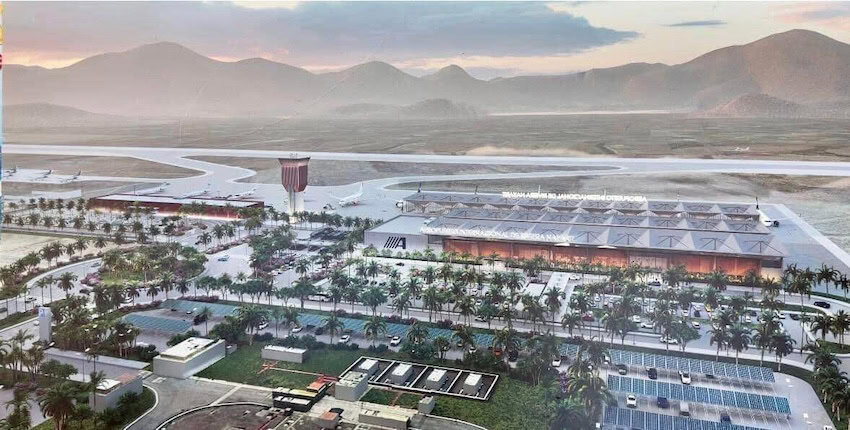April 16 was a historic day for the Nayarit as Tepic International Airport soared to new heights with its inaugural successful international test flight, marking a pivotal step in the airport’s transformation into the Riviera Nayarit International Airport.
Formerly known as Tepic International Airport, the decision to rebrand as Riviera Nayarit International Airport was a strategic move to position the airport as the gateway to Riviera Nayarit. Located in Nayarit’s capital city, Tepic, the airport’s successful international test flight signifies a breakthrough in providing an alternative to Puerto Vallarta’s airport, improving access to Riviera Nayarit’s northern towns.

A tourist paradise
Seventy-two percent of visitors who come to Nayarit do so for tourism, and 60 percent of those visitors are international tourists. Eighty-one percent of visitors who come to the Riviera Nayarit currently fly into either Puerto Vallarta or Guadalajara.
The expansion of international flight operations at Riviera Nayarit International Airport will greatly enhance connectivity with major cities across North America, as the airport is currently in negotiation with several gateways in the U.S. and Canada as the airport readies to debut a brand-new US $250 million expansion and new terminal at the end of 2024. One flight has already been confirmed with Volaris for service to Los Angeles.
Construction on Riviera Nayarit International Airport is almost complete

“We have finished most of the work on the airport,” said Alejandro Muñoz de Cote Ortiz of the Riviera Nayarit International Airport told Mexico News Daily. “Right now we have delivered a new runway and a new control tower. The only thing that remains incomplete right now is the new terminal building.”
Once fully in operation, expected in the first trimester of 2025, the new terminal is projected to receive at least 4 million passengers per year for the first five years, with the potential for 20 million passengers per year in the future. The opening will also include new jet bridges, more than 33,000 square feet of shops and restaurants, and a new car rental center with franchises of international brands like Avis, Budget, and Hertz.
The airport is also set up for the entire immigration process to be digital, a big time saver for travelers who are eager to get on the road to their destination. Muñoz also told us that the airport is in discussions with U.S. authorities for pre-clearance facilities, although this is yet to be confirmed.
“The beautiful highway connects Guadalajara to Puerto Vallarta and in the middle are all the beautiful colonial destinations,” said Muñoz. “Right now, the airport and highway are going to be the new door to Riviera Nayarit from Tepic to Compostela, all the way to the coast. We are in a great place to bring all of our passengers to these places.”
Potential for economic development in quiet Nayarit

Beyond its significance for tourism, the successful international test flight holds immense promise for catalyzing economic growth and development in northern Nayarit, especially with the launch of the new highway between Guadalajara and Puerto Vallarta. The influx of international visitors is expected to generate a ripple effect across various sectors, including hospitality, retail, and real estate.
Combined with the new highway, which runs through Tepic, visitors can fly into the Riviera Nayarit International Airport and be in Punta Mita in just over an hour. The new highway comes into the coast from Compostela and over to Las Varas, running down the northern portion of the coastline. This makes northern towns like Sayulita, San Pancho, Lo de Marcos, Rincón de Guayabitos, Chacala, and San Blas much more accessible to visitors.
These northern towns are much smaller and quieter than their southern neighbors, which have always been easy to access from Puerto Vallarta’s airport. Because of this, the towns have remained relatively undeveloped, small scale, eco-conscious and boutique. The new highway brings coastal destinations like the Magical towns of Mexcaltitán and Islas Marias much closer to travelers.
The highway also provides easier access to the Sierra region of Nayarit, including its unique coffee culture and its mountainous Magical Towns like Ahuacatlán, Compostela, Jala, and Ixtlán del Rio.
Meagan Drillinger is a New York native who has spent the past 15 years traveling around and writing about Mexico. While she’s on the road for assignments most of the time, Puerto Vallarta is her home base. Follow her travels on Instagram at @drillinjourneys or through her blog at drillinjourneys.com.
